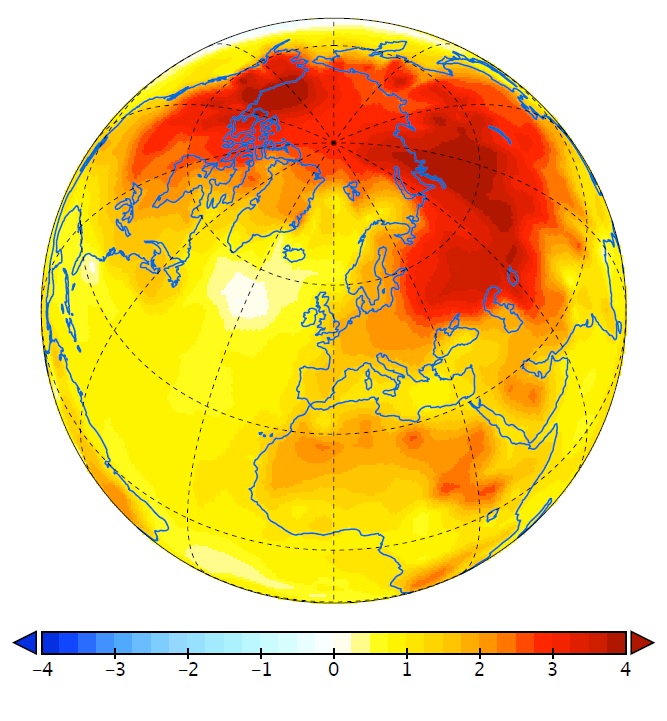
Local drivers are intensifying warming in the Arctic
To see global warming in action, you don’t have to travel far. All over the world, regional climates and ecosystems are rapidly changing due to increases in atmospheric greenhouse gas emissions and warming temperatures.
However, very few places on Earth are experiencing intensified climate change like the Arctic. Record low Arctic sea ice coverage, declines in biodiversity, and increases in surface warming are all evidence of what researchers call Arctic amplification.
Arctic amplification refers to the intensified warming of the Arctic Ocean, Canada, Siberia, and Alaska compared to global temperature rises.
While many models and studies consistently show that Arctic amplification is a problem, what’s driving the increases in warming compared to other regions on Earth has remained a mystery.
Some studies have hypothesized that tropical climate changes have contributed to the intensified warming in the Arctic. But an international team of researchers led by the Center for Climate Physics at the Institute for Basic Science in Busan, South Korea have found that local drivers, not global changes, are responsible Arctic amplification.
The research was published in the journal Nature Climate Change.
“Our study clearly shows that local carbon dioxide forcing and polar feedbacks are most effective in Arctic amplification compared to other processes,” said Malte Stuecker, the corresponding author and project leader for the study.
Local processes can amplify the impacts of atmospheric CO2 emissions, but the researchers used computer simulations to study local and tropical CO2 emissions and climate processes to see which was more influential for Arctic warming.
Tropical warming, as well as wind, ocean and current changes, were used to model potential drivers of Arctic warming and Arctic amplification.
“By comparing simulations with only Arctic CO2 changes with simulations that apply CO2 globally, we find similar Arctic warming patterns,” said Cecilia Bitz, the co-author of the study. “These findings demonstrate that remote physical processes from outside the polar regions do not play a major role, in contrast to previous suggestions.”
The simulations highlighted the effects of decreased reflectivity through melting snow and ice in the Arctic which allows more sunlight exposure to the soils and surface of the ocean and increases warming.
Heat is also more easily trapped and transported in the Arctic compared to the tropics. The unstable atmosphere of the tropics means that air easily moves to higher altitudes and a lot of that energy is lost to space.
In the Arctic though, vertical air movement is hindered, and so the surface is exposed to more radiation and warming. Heat is also easily transported by Arctic winds, and ocean currents exacerbate Arctic Ocean warming.
“Our computer simulations show that these changes in the vertical atmospheric temperature profile in the Arctic region outweigh other regional feedback factors, such as the often-cited ice-albedo feedback,” said Stuecker.
Understanding the drivers of Arctic amplification is important for calculating accurate future climate projections, and this study shows how sensitive the Arctic and Antarctic are to global warming.
—
By Kay Vandette, Earth.com Staff Writer
Image Credit: Institute for Basic Science (IBS)
Paid for by Earth.com













